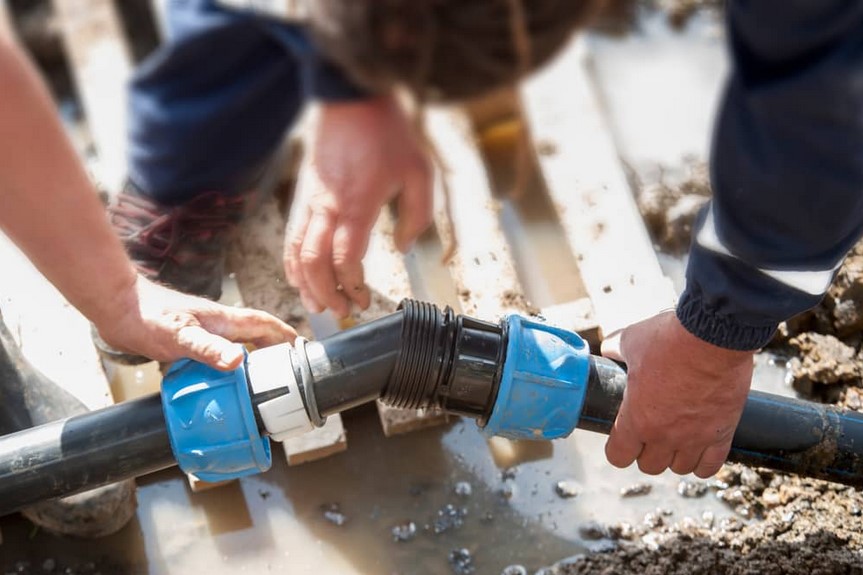
Trenchless techniques take much less time than traditional repair methods that dig holes. This is because the crew doesn’t have to worry about affecting large areas of your property.
Pipelining, also known as cured-in-place pipe (CIPP), involves leaving your old lines in place and repairing any cracks, splits, or leaks from the inside out. It also requires minimal digging, which helps save your yard from costly damage.
Time-Saving
In the past, sewer line repairs required digging a trench from the house to the curb and tearing up lawns and driveways. This was expensive and time-consuming. But now, with trenchless technology, repairs can be done in a day, saving you money and the hassle of restoring your property.
During trenchless pipelining, technicians only need to dig access pits at either end of the damaged pipe. Then, they push a flexible tube resembling neoprene coated in resin inside the old line. Once it hardens, it creates a new pipe within the old one with an outside diameter similar to heavy-duty PVC pipes. Whether you’re a homeowner or a business owner, time is valuable. The longer you wait to get a severe plumbing repair like a broken sewer pipe fixed, the more it affects your daily life and profits. Trenchless sewer pipelining is the fastest and most efficient way to improve your sewer line problems without disrupting your schedule.
Cost-Effective
Traditional sewer line repair methods require digging up the lines and can be costly. Not to mention the costs of re-landscaping and rebuilding sidewalks, driveways, and other outdoor infrastructure.
Trenchless technology eliminates this expense by avoiding digging up the entire lawn and other areas of the property. It also saves you the cost of re-seeding and re-paving your yard.
Trenchless technology can be very cost-effective, such as CIPP lining or pipe bursting, depending on the method used. It is less expensive than traditional procedures and frequently necessitates a smaller staff.
An expert can inspect your sewer line with a video camera to determine if it is an appropriate candidate for a trenchless sewer relining solution. It can also be faster if the issue is mild. However, not all types of pipes can be lined, and if the sewer pipe is damaged in multiple places, a pipe bursting option may be needed.
Environmentally-Friendly
The sewer lines under your property are a complex web of water, sewage, and gas pipes. Historically, repairing or replacing them meant digging up the entire line. This was expensive and messy. It also destroyed landscaping, sidewalks, and paving. Trenchless technology eliminates the need for excavation. This saves you money and effort while also protecting your landscaping.
With trenchless repair methods, technicians only need to dig a couple of small holes at the entrance and exit of your sewer line. This means it takes less time to complete repairs and restore the area.
One of the most popular trenchless sewer repair techniques is cured-in-place pipe lining or CIPP. With this method, a felt tube saturated with epoxy is inserted into your existing pipe. Once it’s in place, the epoxy is inflated and takes the shape of your line to create a durable new liner that will prevent clogs and leaks. CIPP lasts longer than traditional pipes, so you’ll save money on maintenance costs in the long run.
Reliable
Trenchless sewer pipelining is reliable for repairing old, damaged, or failing drains and pipes. Unlike traditional excavation methods, which can take weeks to complete and cause significant damage to landscaping, sidewalks, driveways, and roads, trenchless pipe repair is less disruptive to your life and property and requires less time to finish.
This process is usually completed in just a few days (a day for cleaning, a day for lining, and a day for reinstatement). It also creates a stronger, more durable pipe than your existing sewer line, which can help protect your home from future damage. This is one of the most popular ways for homeowners to get their sewer and drain lines repaired. The process is non-disruptive, meaning large trenches don’t have to be dug in your yard, and large sections of your drywall, ceilings, and flooring won’t need to be removed. The resulting rehabilitated pipe is also corrosion-resistant and can last for decades.
